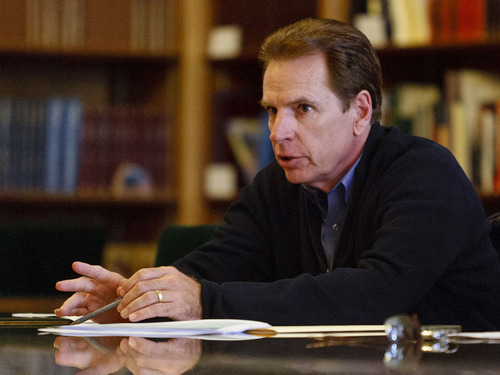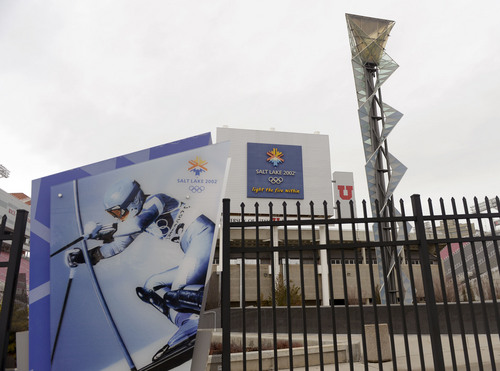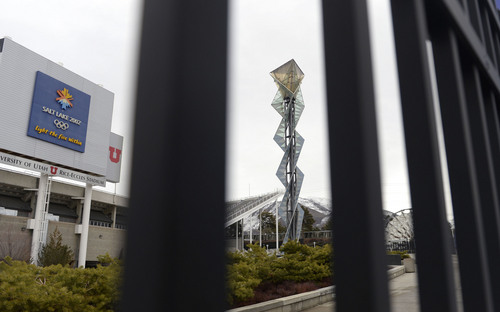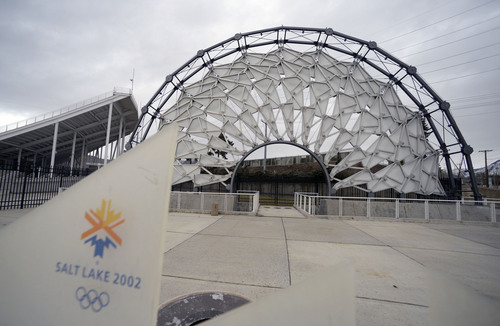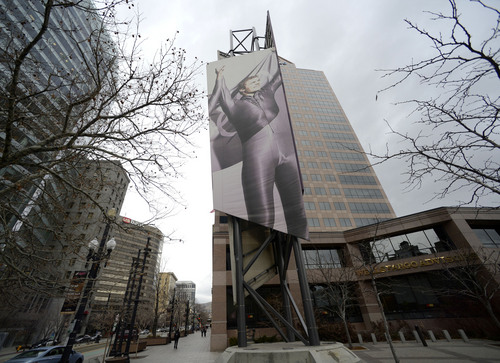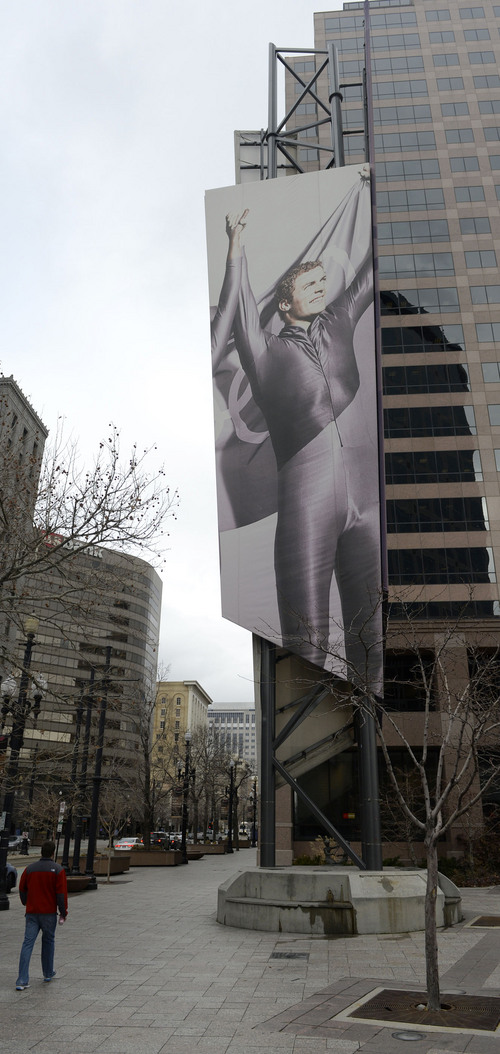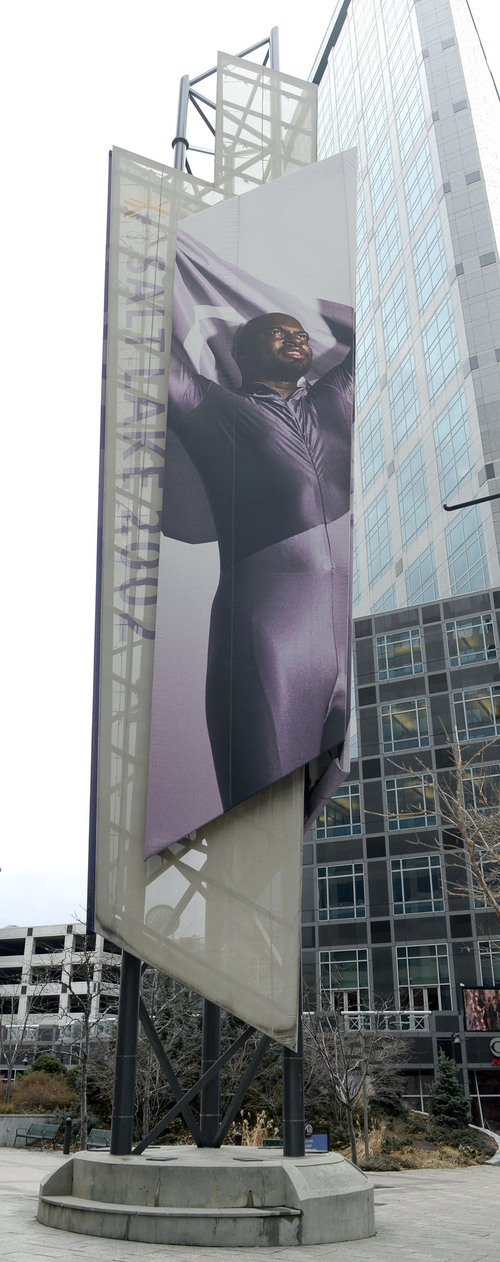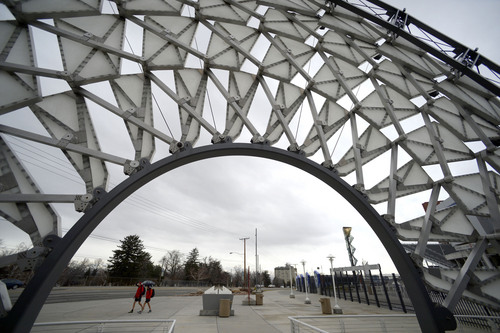This is an archived article that was published on sltrib.com in 2014, and information in the article may be outdated. It is provided only for personal research purposes and may not be reprinted.
Why doesn't downtown Salt Lake City have an Olympic Legacy Park that celebrates the 2002 Winter Games?
That's what City Council Chairman Charlie Luke wants to know.
"We've neglected that legacy," he said. "It's an embarrassment."
What some may not know is that Salt Lake City passed up $8 million to $10 million in funding from the Salt Lake Organizing Committee (SLOC) for a downtown Olympic Legacy Park after the 2002 Games.
The Winter Games, of course, are again in the air as athletes from around the world — 64 with Utah ties — chase gold, silver and bronze in Sochi, Russia. But there is an Olympic vacuum in downtown Salt Lake City, according to Luke, who broached the legacy park topic last week at the council's semiannual retreat.
Although downtown was the focus of much of the activity during the 2002 Winter Games, the Park City area appears to be the big winner in legacy facilities at its Olympic Park.
And Kearns has the Utah Olympic Oval — no small attribute.
But you have to keep a sharp lookout for such physical Olympic legacies in Salt Lake City.
There is the Hoberman Arch and Olympic Cauldron adjoining Rice-Eccles Stadium, the tattered and fading Olympic tower at Gallivan Plaza, and don't forget the Olympic Legacy Plaza at The Gateway mall — a summertime favorite for kids splashing in its fountain.
There are other reminders stashed here and there around Salt Lake City, however, none seems to rise to the level of community jewel, like Atlanta's Centennial Olympic Park, Luke said.
—
Taking a pass • But Salt Lake City did have the opportunity for such an Olympic Legacy Park and passed it by, according to Fraser Bullock, former SLOC chief operating officer.
Not only did Utah's Olympics not go into debt, it even turned a profit. About $76 million went to an endowment to maintain the Olympic Park near Park City and the speedskating oval in Kearns.
In addition, SLOC had $8 million to $10 million ready to hand off to Salt Lake City after the Games in 2002 for a proposed Olympic Legacy Park.
An original proposal would have put it at Pioneer Park, said former Mayor Rocky Anderson, who favored the location and a design he modified to include an ice rink, carousel and other amenities to bring people to the park.
Although SLOC originally favored the Pioneer Park location, Bullock said he was swayed by a proposal from the City Council to place it at Gallivan Plaza. It seemed "perfect" Bullock said "because it was in the heart of downtown."
Gallivan Plaza is a Redevelopment Agency project and, as such, put the City Council — which also sits as the RDA board — in the driver's seat. Despite wrangling between the mayor and council about the location, the Gallivan design went forward, and SLOC was ready to put up $10 million, Bullock recalled.
But there was a hitch: No non-Olympic sponsors could share the plaza with the word "Olympics" or the iconic Olympic rings.
That was a problem for the council, remembered former Councilman Eric Jergensen, because so many activities at Gallivan are underwritten by commercial entities, such as Pepsi, that aren't Olympic sponsors.
"The restrictions placed on Gallivan [by SLOC]," Jergensen said, "would have negated the expectation of downtown synergy that the whole idea of Gallivan was based on in the first place."
Bullock believed the Olympic logo issues could be worked around by cloaking them when other sponsorships took over plaza events. "But there didn't seem to be a lot of interest in doing that."
—
U. of U. • SLOC eventually became frustrated with the city and decided to locate the Hoberman Arch and the Olympic Cauldron at the University of Utah's Rice-Eccles Stadium.
Not only isn't the stadium near downtown, it isn't well suited to be a legacy park, Luke said.
Although it was the site of the opening and closing ceremonies, the stadium is not conducive to day-to-day foot traffic and lacks the cohesive ambience of the Olympics, he said.
The discussion comes as U. officials are looking for a new home for the arch and cauldron because, eventually, they want to expand Rice-Eccles Stadium.
At the same time, Bullock agrees with Luke that a downtown Olympic Legacy Park would still be "fantastic."
"I would support it 100 percent," Bullock said. "I would help the City Council in any way I could."
Councilman Stan Penfold, who also heads RDA board, said even after 12 years, "It would be a shame not to have more of an Olympic legacy downtown."
But funding such a facility would be a challenge, he added. And without Mayor Ralph Becker's participation, it would be even more difficult.
Becker, who was one of three co-chairmen of an exploratory committee that recently gave a thumbs-up for Utah undertaking another Olympic bid, said through a spokesman that he is interested in hearing more details of such a proposal.
But for now, there are no details. And how such a plan would materialize remains unclear.


